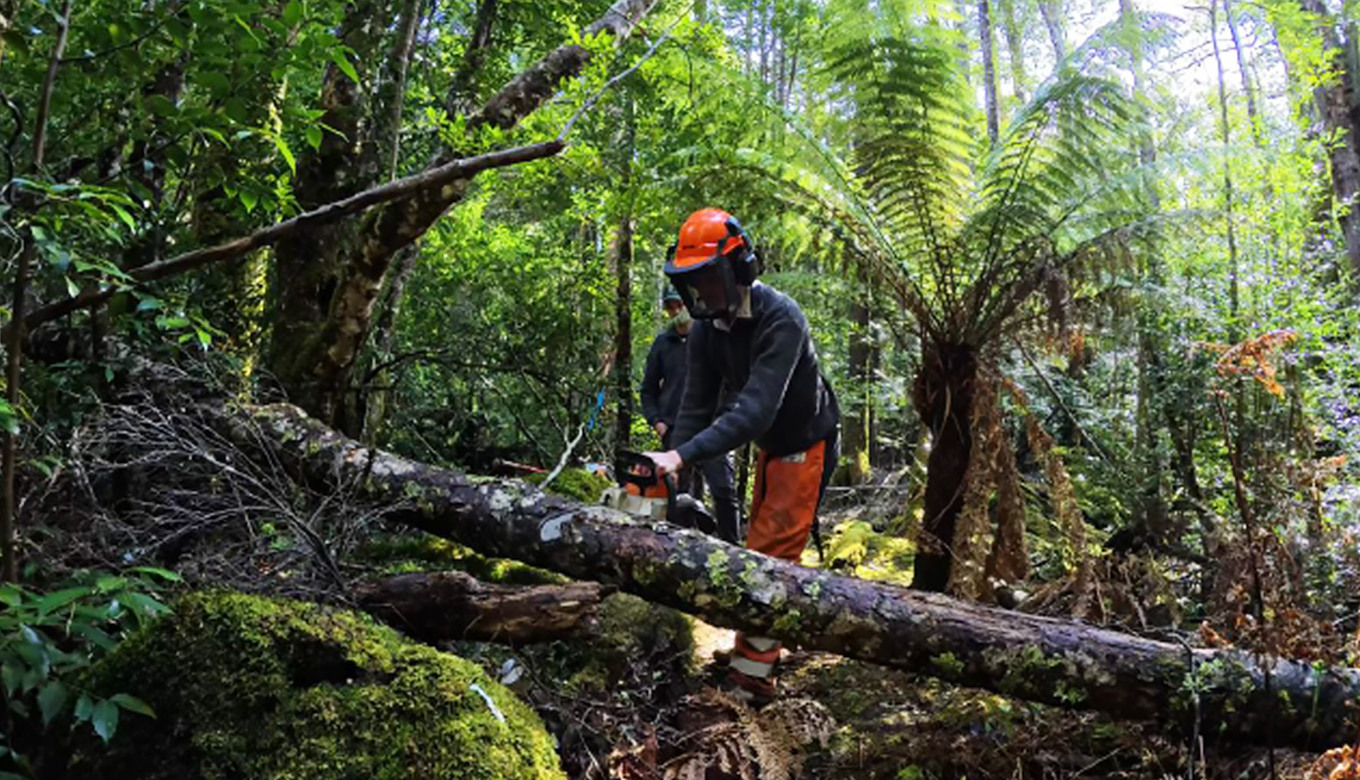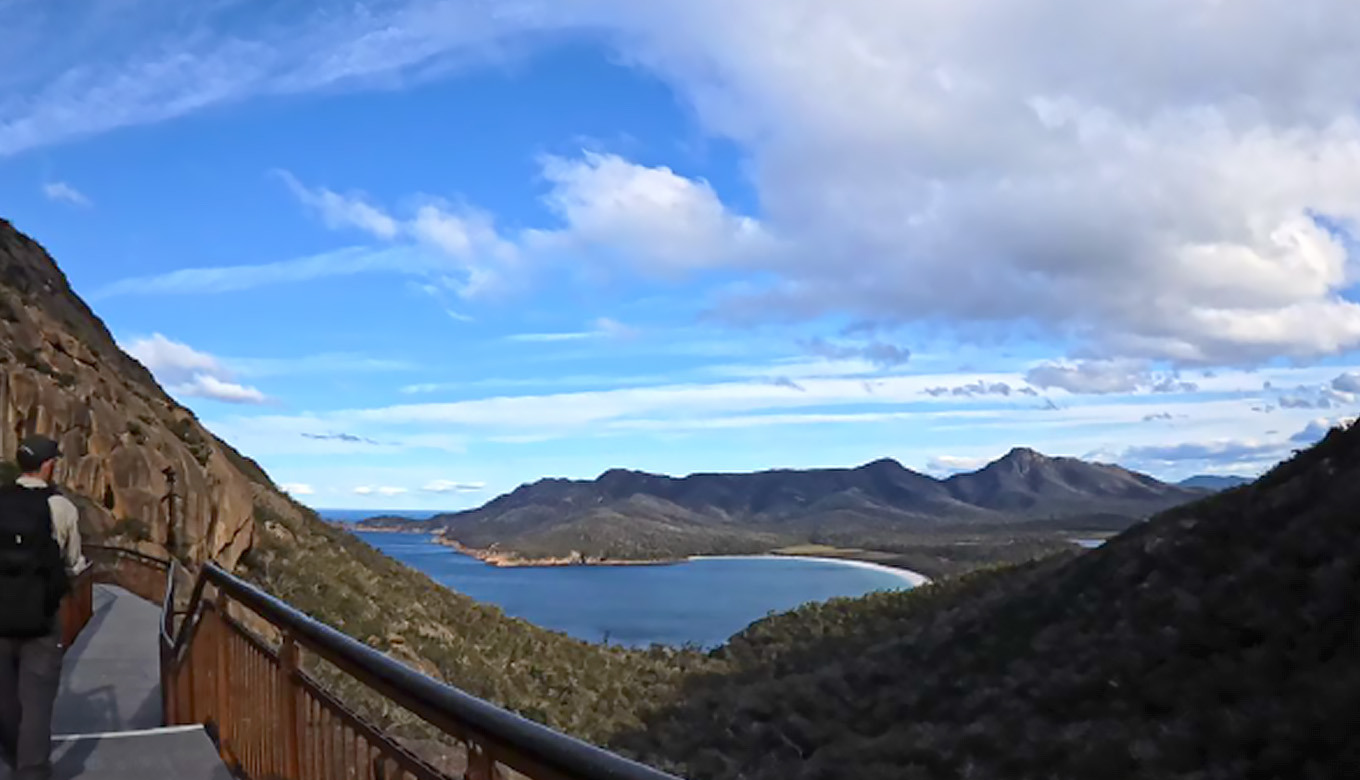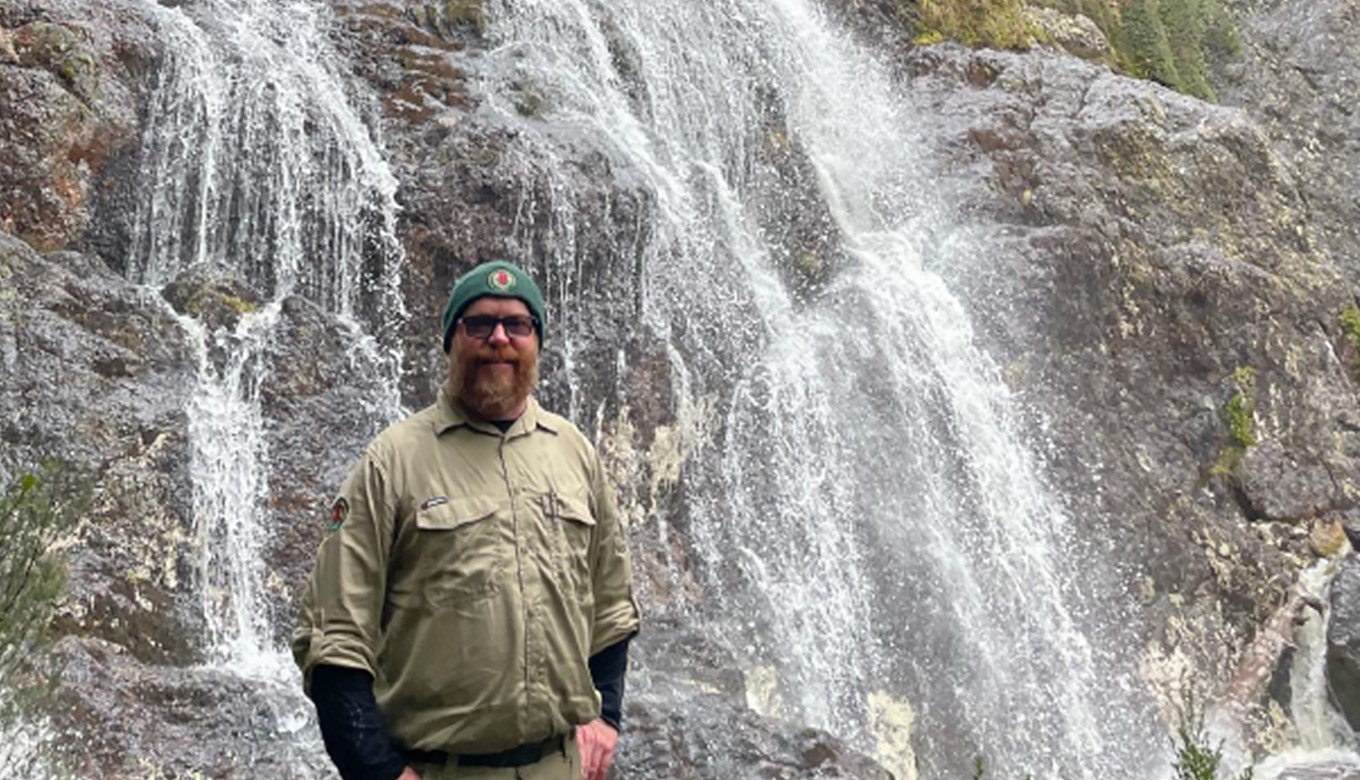
Tales from Tassie - Ranger James’ exchange
After talking to a number of people, I arrived in Tasmania prepared with plenty of warm gear to wear. The contrast between the region I work in, the Flinders Ranges, and Tasmania is staggering.
With the amount of water that is around and the lush green vegetation, it took me some time to adjust. If we were to get a similar amount of rainfall, roads in Ikara-Flinders Ranges would be closed for months.
Another thing that stood out for me is the time it takes to drive a relatively short distance on the windy Tasmanian roads. I am yet to drive a road that wasn’t beautiful, so the extra time it takes is worth it. On one of those journeys, I manage to see a spotted tail quoll in the middle of the day, but I only managed to see a Tasmanian devil in enclosures at Devils@Cradle.
I spent my time working with a number of Parks Tasmania staff from Cradle Mountain and surrounds. A new Field Officer started at the Cradle Mountain work centre, which allowed me to take part in the induction process for new staff and go through Parks Tasmania systems. This included learning the Land Information System Tasmania (LIST) map, uniforms and SafeT system. All were similar to systems, policies and processes that we use in SA.
I was shown the daily procedure at the Cradle Mountain work centre, including:
- Opening the interpretation centre
- Putting weather updates up at Roney Creek (the start of the Overland Track) and Dove Lake for visitors planning walks on some of the tracks
- Checking boot washing stations and water storage supply levels which supply the visitor centre and staff accommodation.
During the first couple of weeks I went to meetings with a road contractor to discuss road verge works on Dove Lake Road and a new bus shed shelter for new hybrid shuttle busses joining the fleet going in and out of Dove Lake. Following that, I spent some time exploring tracks in the Cradle Mountain area and walked several of the short walks, as well as looking at the Crater Falls Track infrastructure — one of the projects budgeted for a future upgrade. The ranger in charge explained the Parks Tasmania track classification system and the standards required to maintain safety for the network of tracks throughout the park.
I drove one of the rangers from Cradle Mountain to Lake St Clair so she could walk the Overland Track to check and clean huts from south to north. One of the Lake St Clair rangers took us out to Narcissus Hut via Echo Point Hut on the Parks and Wildlife Service (PWS) boat.
After the first month I began to recognise that the weather conditions dictate a lot of what is in the operational works program. One day you could be hiking tracks on a bluebird day and a week later you are checking road conditions to give updates on status to the bus shuttle service.

The start of my second month at Cradle Mountain was very interesting, with a large weather system from the west to north-west hitting Tasmania hard. I postponed moving to the other work centres until the weather conditions improved.
Destructive winds and rain caused road closures, power outages and flooding. Cradle Mountain had trees down on Dove Lake Road, which rendered it unsafe for the usual bus shuttle to operate.
Additionally, with the power outages, communications went out, so the visitor centre was closed for a few days. We relied on the Government Radio Network to communicate, and I assisted staff with maintaining fuel to generators, clearing roads and managing tourists, some of which were still determined to hike in the extreme conditions.
When the conditions calmed, we were able to do the monthly wombat survey where we checked the condition of wombats in the high visitation areas. The survey collects numbers of animals, age, condition and if there is any sign of mange.
When the weather conditions settled and roads were re-opened, I was able to make my way down to Triabunna via Mt Field National Park. At Mt Field I had a look at Russell and Horseshoe Falls before heading up on to Mount Mawson ski field to check visitors and clean the toilets.
After arriving at the Triabunna Field centre, I made my way out to Maria Island in the PWS boat to deliver fuel supplies to the island and have a brief look around. The second day I caught the ferry to Maria Island where I helped TAFE Conservation and Ecosystem Management students erect a fence around an erosion site to protect the revegetation from wombats and forest kangaroos. The students also set up some camera traps (which managed to capture a Tasmanian devil) and did some water sampling.
Freycinet National Park was my next stop. Firstly, I joined the local staff in assessing old infrastructure at Meadstone Falls in Mount Puzzler Forest Reserve, which was due for upgrading. The lookout at the falls is currently closed as engineers assessed it to be high risk. We looked at a potential new site where the lookout could be constructed. On route to Mount Puzzler, I tried my first scallop pie from a bakery in Bicheno (jury is still out).
During the remainder of my time in Freycinet I walked into Wineglass Bay to check and clean toilets, helped in the visitor centre talking to tourists, met contractors repairing tracks in the reserve and removed hazardous branches and trees along Freycinet Drive.

From the east coast I returned to Cradle Mountain where I joined the North West Region on a fire training day at Ulverstone. This included BOM weather updates for the season, new technologies, applications and breakout sessions for manual handling, GRN radios and pump operations.
My time in Tasmania finished off with inspection and clearing of a track into Winterbrook Falls, clearing ice off the road at Dove Lake so the shuttle busses can get through and meeting the returning track rangers for seasonal opening of the Overland Track.

Generally, Parks and Wildlife Tasmania and National Parks and Wildlife Service SA are quite similar. Some little differences I noticed may be just specific to the Flinders region rather than the whole of SA. There seems to be more of a walking/hiking culture in Tasmania. Many of the spectacular waterfalls, lakes, rivers and mountain views are only accessible by walking. The network of boardwalks into these locations is extensive and well-maintained. There are large expanses of wilderness and there are areas that are loved to death with high visitation from tourists.
As in South Australia, the Tasmanian parks staff are very passionate and were more than happy to show me around their patch. I am grateful for everyone who was generous with their time, and I hope that I have helped pave the way for future exchange opportunities.
James’ journey shows just how much we can learn when we step into new landscapes and connect with others who share our passion. These exchanges strengthen our collective knowledge and inspire fresh ideas for caring for our wild places. Here’s to more experiences that build bridges and keep our parks thriving for generations to come!